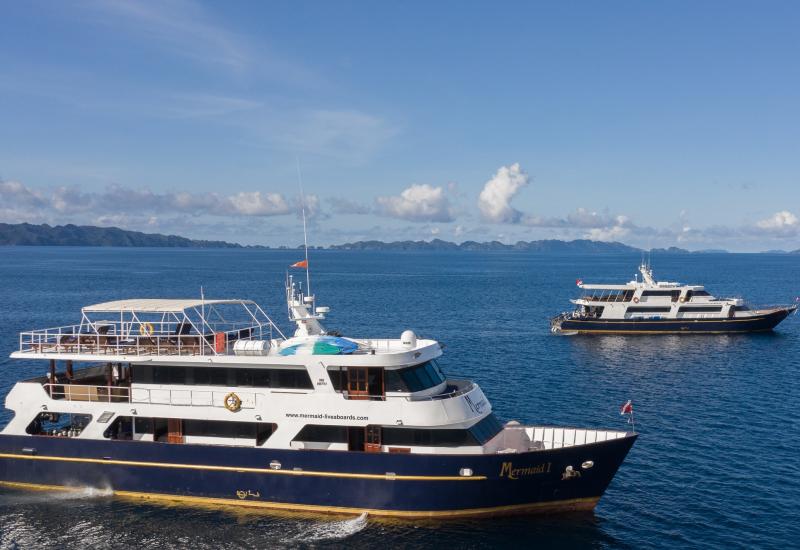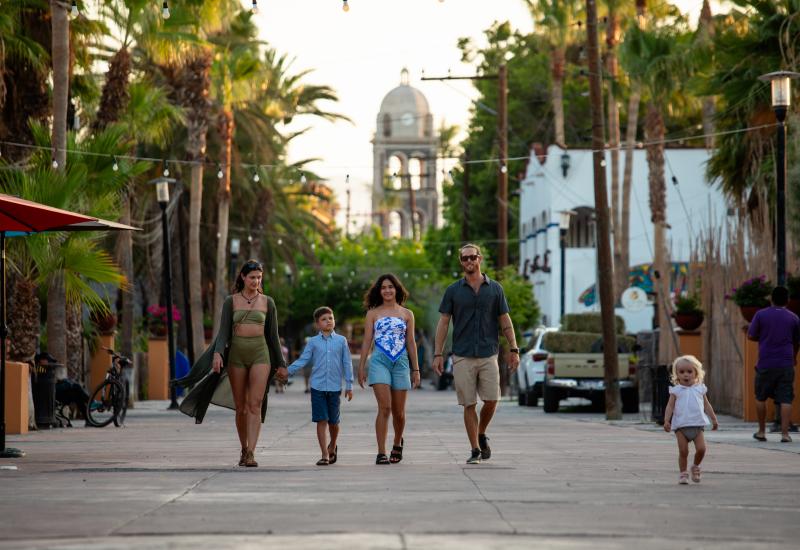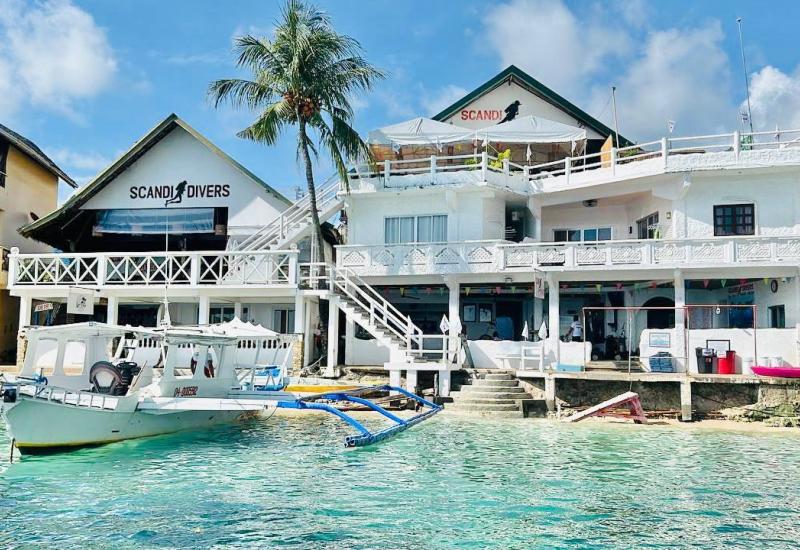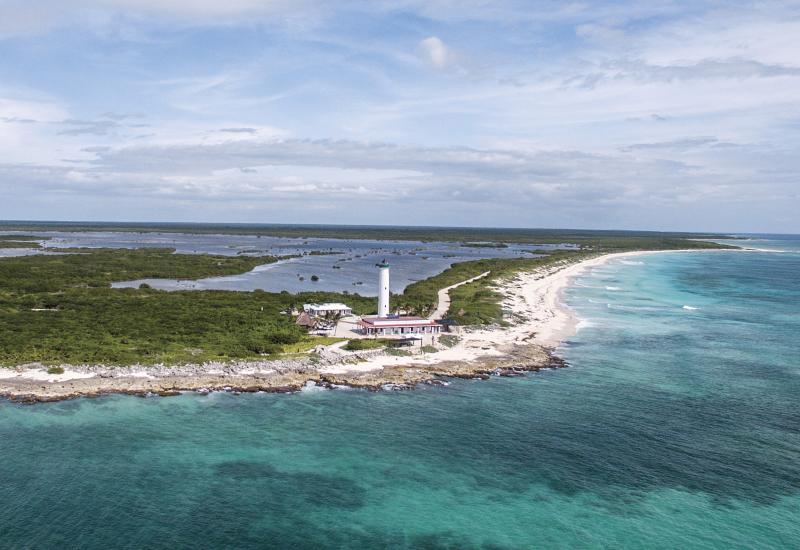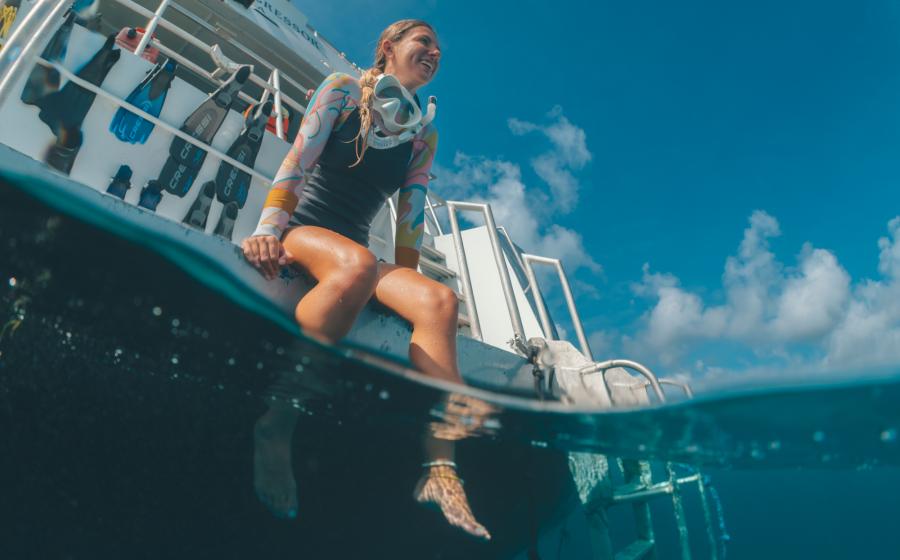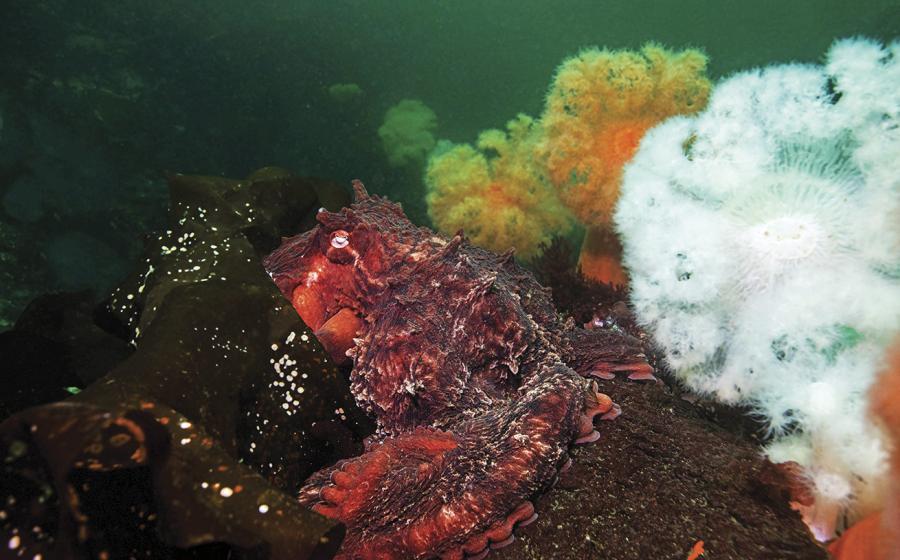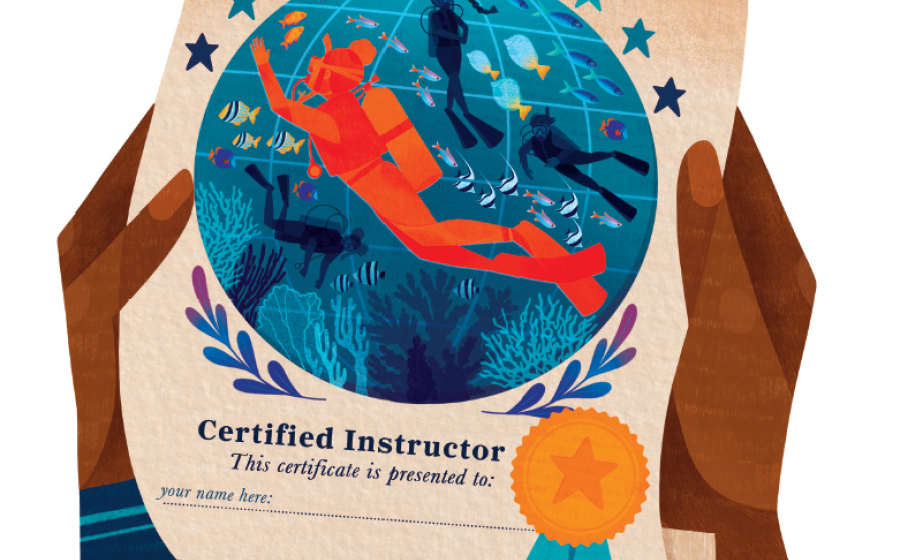Papua New Guinea (August 2008)
Text by Travis Marshall
Photos by Brandon Cole
You can throw around a lot of adjectives when talking about the island country of Papua New Guinea--multifaceted, traditional, remote, just to name a few. And also rich, as in the quality and quantity of its marine biodiversity. PNG occupies a chunk of land in the southwestern Pacific Ocean that it shares with Indonesia. It's one of the marquee destinations in the sprawling Coral Triangle, the global epicenter of staggering numbers of coral and fish species that also includes eastern Indonesia, the Philippines and the Solomon Islands.
My recent two-week itinerary focused on Milne Bay, where I did both land-based and live-aboard diving. One of the objects of the trip was to photograph creatures of the muck, a type of diving PNG put on the map--essentially, looking for small and bizarre creatures that eke out their living on shallow sandy or muddy bottoms.
Mucking Around
Lauadi, located on a scenic bay, is the most iconic of PNG's muck-diving sites and is easily reached from Tawali Resort, where we're staying. The boat tethers stern to the beach, and we slip into the water onto a sand slope that angles slightly downward. We never learn how deep the slope drops off because there is so much life packed between five and 50 feet. It's best to stay shallow and move at a snail's pace to spot the cryptic life populating the isolated bommies and random detritus. Along the coral clusters, cuttlefish and octopus are very common, as are groups of cardinalfish, damselfish and the ubiquitous anthias.
The most fun encounters at Lauadi are with smaller sand-dwellers. Tiny shrimp live symbiotically beneath sea cucumbers; seahorses curl around tiny bits of sponge; mantis shrimp lurk in sandy lairs, waiting to ambush hapless passing prey; and harlequin ghost pipefish pretend to be part of the nearby crinoids. There are also vibrantly decorated, flamboyant cuttlefish the size of the end of your thumb--far different from their larger-sized cousins.
To make the most of a muck dive, we tap into the knowledge of local guides, who know how to recognize the habitats of the most interesting macro creatures. The guides know what these animals eat--and what eats them. (For more about muck diving and the importance of a good local guide, see "Mastering the Muck" on page 85 of this issue.)
Another must-do site is directly adjacent to Lauadi, but while the muck-meisters work the sand of the bay, wide-angle enthusiasts embrace Deacon's Reef, at the tip of this same bay, where it juts out into the sea. Local villagers paddle by in their traditional dugout canoes, which, along with the scenic reefs, imparts a sense of timeless beauty.
In the House
While many of our best dives at Tawali are by boat, including many of the same seamounts we would later do by live-aboard, the resort's house reef is also stellar. While it isn't really a wide-angle kind of dive, there are fascinating creatures to be found day or night. There are two piers on the property, so it's pretty easy to pick up a tank at either dock and just laze along the spur-and-groove formations radiating seaward. A one-way trip here, with such packed density of marine life, takes a bit of discipline to keep moving fast enough to actually get from dock to dock. A distance that normally might take 15 minutes to swim on a dive can take more than an hour, given the fascinating distractions along the way. At dusk each night, the stars of Tawali's house reef are tiny mandarinfish briefly popping from their finger-coral habitat to mate--for one nanosecond, underwater paparazzi have the chance to photograph these colorful and elusive fish.
Skull Cave
Most of our time at Tawali is devoted to diving, but we also make a topside tour to Skull Cave. While it sounds like a set in a Pirates of the Caribbean movie or a Disney ride, this is the real deal. We travel to Lauadi beach and then hike up a hillside to a pair of caves. Here, there are piles of skulls, many with holes in the top, about the size of a stone axe. Historians say the skulls date back centuries to PNG's pre-missionary time in the days of intertribal warfare. By climbing farther, we reach some waterfalls that are worth the hike.
PNG by Live-Aboard
After a week of land-based diving, we join a pair of live-aboards, the MV Golden Dawn and MV Telita, to expand our Milne Bay explorations. (The Spirit of Niugini and MV Chertan also operate out of Tawali.) Our group of 16 divers is split between the two boats, so that we can put smaller numbers of divers on the reef at one time.
There are several special dives we make from the live-aboard, though these are also accessible from Tawali--as long as you're prepared to spend the day at sea, as many of these sites are a 90-minute boat ride each way from Tawali's docks. From the live-aboards, we dive the offshore pinnacles for one or two dives, and then spend our surface interval en route to the next site. We usually make five dives each day, and at some sites, we switch optics and do the same dive again, thereby covering both wide-angle and macro ends of the spectrum.
Cherie's Reef, Tania's Reef and Crinoid City are among the most spectacular sites. They're distinctly different and are all in close proximity. They top out at about 20 to 25 feet with a broad expanse of hard coral punctuated by anemones, clownfish and massive clouds of anthias. Each features a semi-vertical wall decorated with brilliant soft corals. However, the reef dwellers are dramatically different. At Crinoid City, we spot a resident rhinopias and an epaulet shark endemic to the Milne Bay region, as well as octopus, a resident school of jacks and for some reason, extraordinarily tolerant angelfish. At Cherie's Reef, the stars are two different species of pygmies on seafans at reasonable depths (one at 72 feet, the other at only 36 feet), a multitude of cleaning stations visited by coral groupers and sweetlips; and clownfish, hawkfish and all manner of small butterflyfish that pack the reef shallows.
You'll want to spend a full day at The Pier at Samurai Island because of the sheer diversity of the marine life found there. In only 25 feet of water, there are several species of batfish and catfish, and schools of baitfish that part and coalesce around the tubastrea-cloaked pilings. Overcast skies and marginal visibility conspire against what should be a stellar wide-angle opportunity, but the presence of marine life against such colorful backgrounds makes for some dramatic images.
Most days we cruise in tandem, with one boat anchored at Samurai Island, and the other visiting Giants at Home (the English name for the more challenging local one, Gonobacabaca). Samurai's shallow reef, in front of a small village, is rich with life, while Giants at Home is a single coral bommie rising 50 feet from the seafloor. The mantas here perform barrel rolls and loop-de-loops, always returning to the same spot to be cleaned.
There are many other dive sites in Milne Bay, and whatever the sea conditions, there is always something enticing to see or photograph. It's just one of many regions worth diving in Papua New Guinea. Here's a sampling of other regions visited by a number of live-aboards.
New Britain Island
Diving here is done off both its north and south coasts, including sites in Kimbe Bay, the Witu Islands, and in Lolobau, off Rabaul.
The Kimbe Bay Seamounts This series of pinnacles is surrounded by deep water and attracts schools of bigeye trevally, barracuda and rainbow runners. Some of the reefs here are shallow, like North Ema, but others top out at about 65 feet, like Bradford Shoal.
Walindi Reefs A number of stellar sites are located in Kimbe Bay, close to Walindi Resort. Hanging Gardens, for example, features a vertical wall that drops from the surface to about 90 feet. Because this site is close to the resort's dock, it's a good night dive, with flashlightfish and odd invertebrates sheltering in the wall's cracks and crevices.
Two Tanks This site, accessible from Rabaul and located off the Duke of York Islands, is in shallow water. The two sunken tanks that give the site its name date from World War II.
Port Moresby and Eastern Fields
PNG's capital city, Port Moresby, offers a plethora of nearby sites, including wrecks, seamounts and reefs. For a few months of the year (November and December and April and May), some live-aboards make the 10-hour cruise from Port Moresby southwest to the Eastern Fields in the Coral Sea. Here you'll find pristine reefs, incredible visibility and strong currents. Much of the area is still unexplored, and live-aboard operators are still finding and naming sites.
The Finger It's a popular site just a 30-minute ride on a fast boat from Port Moresby. It offers both shallow and deep profiles, with a reef that begins in 15 feet of water and slopes down past recreational depths. Gray reef sharks are commonly spotted.
Suzie's Bommie This deep coral tower, dived from Bootless Inlet southeast of the capital, is a favorite of underwater photographers because it hosts a variety of macro creatures, including tiny pygmy seahorses that cling to the sea fans.
Carl's Ultimate Big animal encounters are the hallmark of sites in the Eastern Fields, and this spot is no exception. Expect to see sharks, including gray reef, white-tips and silver-tips. Schools of scalloped hammerheads can also be found.
Our Thanks
Tawali Resort tawali.com
Golden Dawn mvgoldendawn.com
Telita telitacruises.com
Papua New Guinea Resources
Caradonna Dive Adventures, 800-328-2288, caradonna.com
Reef & Rainforest, 800-794 9767, reefrainforest.com
South Pacific Island Travel, 877-773-4846, spislandtravel.com
Trip-n-Tour, 800-348-0842, trip-n-tour.com
Peter Hughes/Star Dancer, 800-932-6237, peterhughes.com
Getting Here
Milne Bay is located at the most southeastern tip of Papua New Guinea and is accessible by a wide variety of international flights to Port Moresby (POM), followed by a short connecting flight to Gurney Airport (GUR) in Alotau. Most of the live-aboards in the region board their guests at Alotau, but if you're headed to Tawali Resort, add on another one-and-a-half hours for a bus and boat ride.
To get to New Britain Island from Port Moresby, you'll have to catch a one-and-a-half hour connecting flight to either Rabaul (RAB) or Hoskins (HKN).
InDepth
Water Conditions: Average water temperatures vary from 77 degrees along the edge of the Coral Sea to 84 degrees in the Bismarck Sea.
Weather: Tropical, with coastal temperatures hovering between 77 degrees and 86 degrees. Rainfall is heavy, but varies greatly. The wet season is from December to March.
Getting There: Regardless of where you choose to dive in Papua New Guinea, Port Moresby (POM) is the international gateway. Australian national carrier Qantas flies nonstop between Los Angeles and Brisbane (BNE), and from there offers nonstops to Port Moresby, as do Air Niugini and Airlines PNG. Flying first to Tokyo (NRT) on Japan, American or Northwest Airlines and then flying Air Niugini nonstop to Port Moresby may prove to be a shortcut. From Port Moresby, Air Niugini's extensive route network covers the entire country, but local dive pros warn against booking connections too soon after an international flight to avoid lost luggage.
Documents: A passport and visa are required. You can get a 60-day tourist visa (about US$30) on arrival, but it's best to obtain one in advance from the PNG Embassy web site, pngembassy.org. If your itinerary includes overnight layovers in Australia, you'll also need an Australian tourist visa. It's US$20, and must be arranged (either on paper or electronically) in advance. For details, go to the Australian Embassy web site, austemb.org.
Language: More than 800 languages are spoken in PNG, but English is the official language for business, education and government. Tok Pisin--or New Guinea Pidgin--is the second language of most natives.
Money Matters: The kina (PGK), which fluctuates wildly. At press time, US$1 = PGK2.67. The departure tax must be paid in kinas (about PGK30), but is usually included in your airfare. Some smaller dive operations do not accept credit cards. It's possible to cash traveler's checks and exchange money, though it can be a slow process. Time: 10 hours ahead of GMT; daylight saving time is not observed.
Electricity: 240 volts, 50 cycles, with Australian-style sockets. Many resorts and boats have 120 volts, 50 cycles, with U.S.-style sockets.
Dive Operators: For more information scubadiving.com/travel/pacificandindianoceans/papua_new_guinea.
Tourism: Papua New Guinea Tourism Authority, pngtourism.org.
Text by Travis Marshall
Photos by Brandon Cole
You can throw around a lot of adjectives when talking about the island country of Papua New Guinea--multifaceted, traditional, remote, just to name a few. And also rich, as in the quality and quantity of its marine biodiversity. PNG occupies a chunk of land in the southwestern Pacific Ocean that it shares with Indonesia. It's one of the marquee destinations in the sprawling Coral Triangle, the global epicenter of staggering numbers of coral and fish species that also includes eastern Indonesia, the Philippines and the Solomon Islands.
My recent two-week itinerary focused on Milne Bay, where I did both land-based and live-aboard diving. One of the objects of the trip was to photograph creatures of the muck, a type of diving PNG put on the map--essentially, looking for small and bizarre creatures that eke out their living on shallow sandy or muddy bottoms.
Mucking Around
Lauadi, located on a scenic bay, is the most iconic of PNG's muck-diving sites and is easily reached from Tawali Resort, where we're staying. The boat tethers stern to the beach, and we slip into the water onto a sand slope that angles slightly downward. We never learn how deep the slope drops off because there is so much life packed between five and 50 feet. It's best to stay shallow and move at a snail's pace to spot the cryptic life populating the isolated bommies and random detritus. Along the coral clusters, cuttlefish and octopus are very common, as are groups of cardinalfish, damselfish and the ubiquitous anthias.
The most fun encounters at Lauadi are with smaller sand-dwellers. Tiny shrimp live symbiotically beneath sea cucumbers; seahorses curl around tiny bits of sponge; mantis shrimp lurk in sandy lairs, waiting to ambush hapless passing prey; and harlequin ghost pipefish pretend to be part of the nearby crinoids. There are also vibrantly decorated, flamboyant cuttlefish the size of the end of your thumb--far different from their larger-sized cousins.
To make the most of a muck dive, we tap into the knowledge of local guides, who know how to recognize the habitats of the most interesting macro creatures. The guides know what these animals eat--and what eats them. (For more about muck diving and the importance of a good local guide, see "Mastering the Muck" on page 85 of this issue.)
Another must-do site is directly adjacent to Lauadi, but while the muck-meisters work the sand of the bay, wide-angle enthusiasts embrace Deacon's Reef, at the tip of this same bay, where it juts out into the sea. Local villagers paddle by in their traditional dugout canoes, which, along with the scenic reefs, imparts a sense of timeless beauty.
In the House
While many of our best dives at Tawali are by boat, including many of the same seamounts we would later do by live-aboard, the resort's house reef is also stellar. While it isn't really a wide-angle kind of dive, there are fascinating creatures to be found day or night. There are two piers on the property, so it's pretty easy to pick up a tank at either dock and just laze along the spur-and-groove formations radiating seaward. A one-way trip here, with such packed density of marine life, takes a bit of discipline to keep moving fast enough to actually get from dock to dock. A distance that normally might take 15 minutes to swim on a dive can take more than an hour, given the fascinating distractions along the way. At dusk each night, the stars of Tawali's house reef are tiny mandarinfish briefly popping from their finger-coral habitat to mate--for one nanosecond, underwater paparazzi have the chance to photograph these colorful and elusive fish.
Skull Cave
Most of our time at Tawali is devoted to diving, but we also make a topside tour to Skull Cave. While it sounds like a set in a Pirates of the Caribbean movie or a Disney ride, this is the real deal. We travel to Lauadi beach and then hike up a hillside to a pair of caves. Here, there are piles of skulls, many with holes in the top, about the size of a stone axe. Historians say the skulls date back centuries to PNG's pre-missionary time in the days of intertribal warfare. By climbing farther, we reach some waterfalls that are worth the hike.
PNG by Live-Aboard
After a week of land-based diving, we join a pair of live-aboards, the MV Golden Dawn and MV Telita, to expand our Milne Bay explorations. (The Spirit of Niugini and MV Chertan also operate out of Tawali.) Our group of 16 divers is split between the two boats, so that we can put smaller numbers of divers on the reef at one time.
There are several special dives we make from the live-aboard, though these are also accessible from Tawali--as long as you're prepared to spend the day at sea, as many of these sites are a 90-minute boat ride each way from Tawali's docks. From the live-aboards, we dive the offshore pinnacles for one or two dives, and then spend our surface interval en route to the next site. We usually make five dives each day, and at some sites, we switch optics and do the same dive again, thereby covering both wide-angle and macro ends of the spectrum.
Cherie's Reef, Tania's Reef and Crinoid City are among the most spectacular sites. They're distinctly different and are all in close proximity. They top out at about 20 to 25 feet with a broad expanse of hard coral punctuated by anemones, clownfish and massive clouds of anthias. Each features a semi-vertical wall decorated with brilliant soft corals. However, the reef dwellers are dramatically different. At Crinoid City, we spot a resident rhinopias and an epaulet shark endemic to the Milne Bay region, as well as octopus, a resident school of jacks and for some reason, extraordinarily tolerant angelfish. At Cherie's Reef, the stars are two different species of pygmies on seafans at reasonable depths (one at 72 feet, the other at only 36 feet), a multitude of cleaning stations visited by coral groupers and sweetlips; and clownfish, hawkfish and all manner of small butterflyfish that pack the reef shallows.
You'll want to spend a full day at The Pier at Samurai Island because of the sheer diversity of the marine life found there. In only 25 feet of water, there are several species of batfish and catfish, and schools of baitfish that part and coalesce around the tubastrea-cloaked pilings. Overcast skies and marginal visibility conspire against what should be a stellar wide-angle opportunity, but the presence of marine life against such colorful backgrounds makes for some dramatic images.
Most days we cruise in tandem, with one boat anchored at Samurai Island, and the other visiting Giants at Home (the English name for the more challenging local one, Gonobacabaca). Samurai's shallow reef, in front of a small village, is rich with life, while Giants at Home is a single coral bommie rising 50 feet from the seafloor. The mantas here perform barrel rolls and loop-de-loops, always returning to the same spot to be cleaned.
There are many other dive sites in Milne Bay, and whatever the sea conditions, there is always something enticing to see or photograph. It's just one of many regions worth diving in Papua New Guinea. Here's a sampling of other regions visited by a number of live-aboards.

New Britain Island
Diving here is done off both its north and south coasts, including sites in Kimbe Bay, the Witu Islands, and in Lolobau, off Rabaul.
The Kimbe Bay Seamounts This series of pinnacles is surrounded by deep water and attracts schools of bigeye trevally, barracuda and rainbow runners. Some of the reefs here are shallow, like North Ema, but others top out at about 65 feet, like Bradford Shoal.
Walindi Reefs A number of stellar sites are located in Kimbe Bay, close to Walindi Resort. Hanging Gardens, for example, features a vertical wall that drops from the surface to about 90 feet. Because this site is close to the resort's dock, it's a good night dive, with flashlightfish and odd invertebrates sheltering in the wall's cracks and crevices.
Two Tanks This site, accessible from Rabaul and located off the Duke of York Islands, is in shallow water. The two sunken tanks that give the site its name date from World War II.
Port Moresby and Eastern Fields
PNG's capital city, Port Moresby, offers a plethora of nearby sites, including wrecks, seamounts and reefs. For a few months of the year (November and December and April and May), some live-aboards make the 10-hour cruise from Port Moresby southwest to the Eastern Fields in the Coral Sea. Here you'll find pristine reefs, incredible visibility and strong currents. Much of the area is still unexplored, and live-aboard operators are still finding and naming sites.
The Finger It's a popular site just a 30-minute ride on a fast boat from Port Moresby. It offers both shallow and deep profiles, with a reef that begins in 15 feet of water and slopes down past recreational depths. Gray reef sharks are commonly spotted.
Suzie's Bommie This deep coral tower, dived from Bootless Inlet southeast of the capital, is a favorite of underwater photographers because it hosts a variety of macro creatures, including tiny pygmy seahorses that cling to the sea fans.
Carl's Ultimate Big animal encounters are the hallmark of sites in the Eastern Fields, and this spot is no exception. Expect to see sharks, including gray reef, white-tips and silver-tips. Schools of scalloped hammerheads can also be found.

Our Thanks
Tawali Resort tawali.com
Golden Dawn mvgoldendawn.com
Telita telitacruises.com
Papua New Guinea Resources
Caradonna Dive Adventures, 800-328-2288, caradonna.com
Reef & Rainforest, 800-794 9767, reefrainforest.com
South Pacific Island Travel, 877-773-4846, spislandtravel.com
Trip-n-Tour, 800-348-0842, trip-n-tour.com
Peter Hughes/Star Dancer, 800-932-6237, peterhughes.com
Getting Here
Milne Bay is located at the most southeastern tip of Papua New Guinea and is accessible by a wide variety of international flights to Port Moresby (POM), followed by a short connecting flight to Gurney Airport (GUR) in Alotau. Most of the live-aboards in the region board their guests at Alotau, but if you're headed to Tawali Resort, add on another one-and-a-half hours for a bus and boat ride.
To get to New Britain Island from Port Moresby, you'll have to catch a one-and-a-half hour connecting flight to either Rabaul (RAB) or Hoskins (HKN).

InDepth
Water Conditions: Average water temperatures vary from 77 degrees along the edge of the Coral Sea to 84 degrees in the Bismarck Sea.
Weather: Tropical, with coastal temperatures hovering between 77 degrees and 86 degrees. Rainfall is heavy, but varies greatly. The wet season is from December to March.
Getting There: Regardless of where you choose to dive in Papua New Guinea, Port Moresby (POM) is the international gateway. Australian national carrier Qantas flies nonstop between Los Angeles and Brisbane (BNE), and from there offers nonstops to Port Moresby, as do Air Niugini and Airlines PNG. Flying first to Tokyo (NRT) on Japan, American or Northwest Airlines and then flying Air Niugini nonstop to Port Moresby may prove to be a shortcut. From Port Moresby, Air Niugini's extensive route network covers the entire country, but local dive pros warn against booking connections too soon after an international flight to avoid lost luggage.
Documents: A passport and visa are required. You can get a 60-day tourist visa (about US$30) on arrival, but it's best to obtain one in advance from the PNG Embassy web site, pngembassy.org. If your itinerary includes overnight layovers in Australia, you'll also need an Australian tourist visa. It's US$20, and must be arranged (either on paper or electronically) in advance. For details, go to the Australian Embassy web site, austemb.org.
Language: More than 800 languages are spoken in PNG, but English is the official language for business, education and government. Tok Pisin--or New Guinea Pidgin--is the second language of most natives.
Money Matters: The kina (PGK), which fluctuates wildly. At press time, US$1 = PGK2.67. The departure tax must be paid in kinas (about PGK30), but is usually included in your airfare. Some smaller dive operations do not accept credit cards. It's possible to cash traveler's checks and exchange money, though it can be a slow process. Time: 10 hours ahead of GMT; daylight saving time is not observed.
Electricity: 240 volts, 50 cycles, with Australian-style sockets. Many resorts and boats have 120 volts, 50 cycles, with U.S.-style sockets.
Dive Operators: For more information scubadiving.com/travel/pacificandindianoceans/papua_new_guinea.
Tourism: Papua New Guinea Tourism Authority, pngtourism.org.

